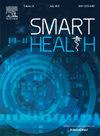Human knowledge-based artificial intelligence methods for skin cancer management: Accuracy and interpretability study
Q2 Health Professions
引用次数: 0
Abstract
Skin cancer management, including monitoring and excision, involves sophisticated decisions reliant on several interdependent factors. This complexity leads to a scarcity of data useful for skin cancer management. Deep learning achieved massive success in computer vision due to its ability to extract representative features from images. However, deep learning methods require large amounts of data to develop accurate models, whereas machine learning methods perform well with small datasets. In this work, we aim to compare the accuracy and interpretability of skin cancer management prediction 1) using deep learning and machine learning methods and 2) utilizing various inputs including clinical images, dermoscopic images, and lesion clinical tabular features created by experts to represent lesion characteristics. We implemented two approaches, a deep learning pipeline for feature extraction and classification trained on different input modalities including images and lesion clinical features. The second approach uses lesion clinical features to train machine learning classifiers. The results show that the machine learning approach trained on clinical features achieves higher accuracy (0.80) and higher area under the curve (0.92) compared to the deep learning pipeline trained on skin images and lesion clinical features which achieves an accuracy of 0.66 and area under the curve of 0.74. Additionally, the machine learning approach provides more informative and understandable interpretations of the results. This work emphasizes the significance of utilizing human knowledge in developing precise and transparent predictive models. In addition, our findings highlight the potential of machine learning methods in predicting lesion management in situation where the data size is insufficient to leverage deep learning capabilities.
基于人类知识的皮肤癌管理人工智能方法:准确性和可解释性研究
皮肤癌的管理,包括监测和切除,涉及依赖于几个相互依存因素的复杂决策。这种复杂性导致对皮肤癌管理有用的数据缺乏。由于能够从图像中提取代表性特征,深度学习在计算机视觉领域取得了巨大的成功。然而,深度学习方法需要大量的数据来开发准确的模型,而机器学习方法在小数据集上表现良好。在这项工作中,我们的目标是比较皮肤癌管理预测的准确性和可解释性:1)使用深度学习和机器学习方法;2)利用各种输入,包括临床图像、皮肤镜图像和专家创建的病变临床表格特征来代表病变特征。我们实现了两种方法,一种是深度学习管道,用于特征提取和分类,训练于不同的输入模式,包括图像和病变临床特征。第二种方法使用病变临床特征来训练机器学习分类器。结果表明,与基于皮肤图像和病变临床特征训练的深度学习管道相比,基于临床特征训练的机器学习方法获得了更高的准确率(0.80)和曲线下面积(0.92),后者的准确率为0.66,曲线下面积为0.74。此外,机器学习方法为结果提供了更多信息和可理解的解释。这项工作强调了利用人类知识开发精确和透明的预测模型的重要性。此外,我们的研究结果强调了机器学习方法在数据量不足以利用深度学习能力的情况下预测病变管理的潜力。
本文章由计算机程序翻译,如有差异,请以英文原文为准。
求助全文
约1分钟内获得全文
求助全文

 求助内容:
求助内容: 应助结果提醒方式:
应助结果提醒方式:


